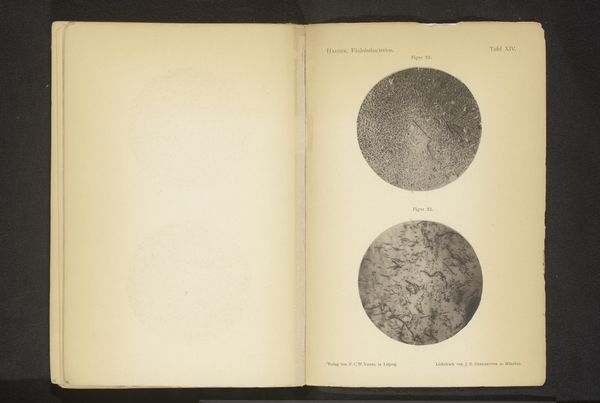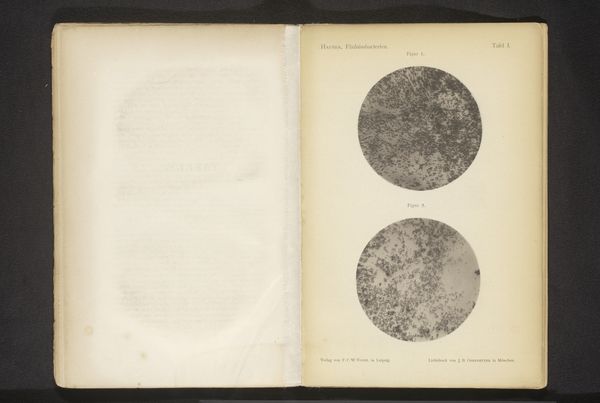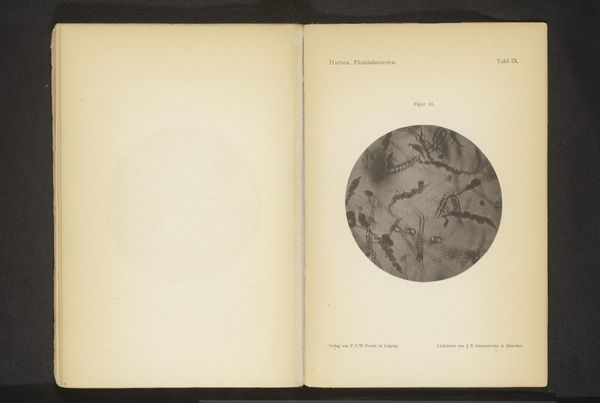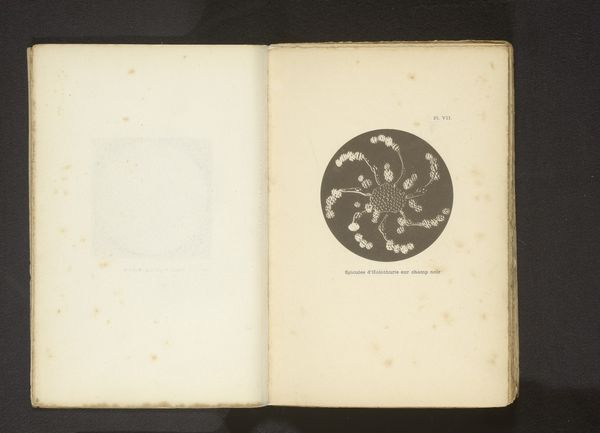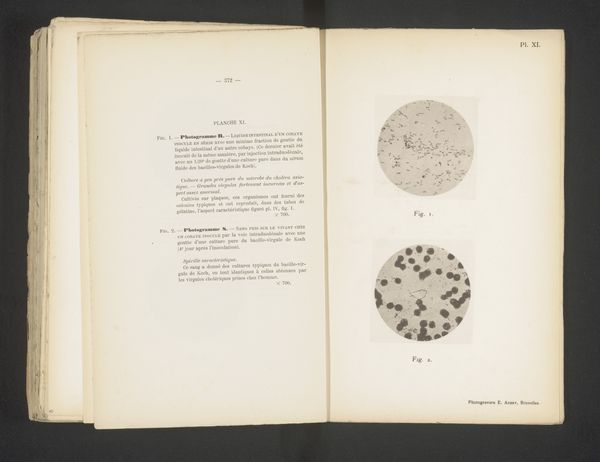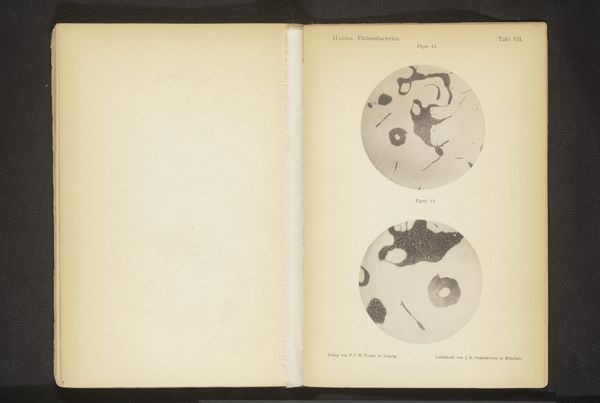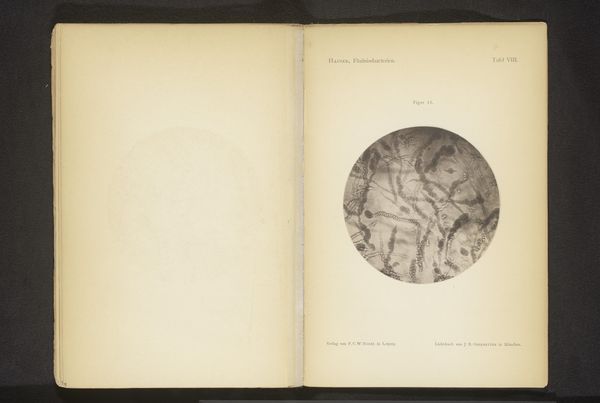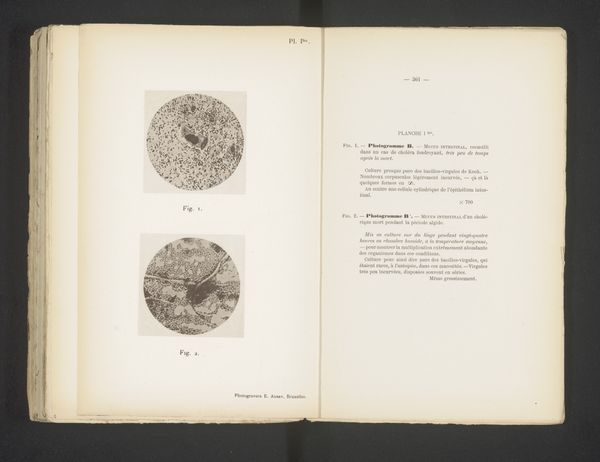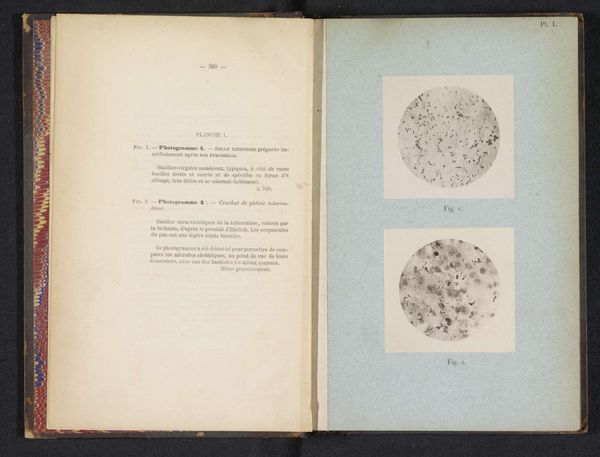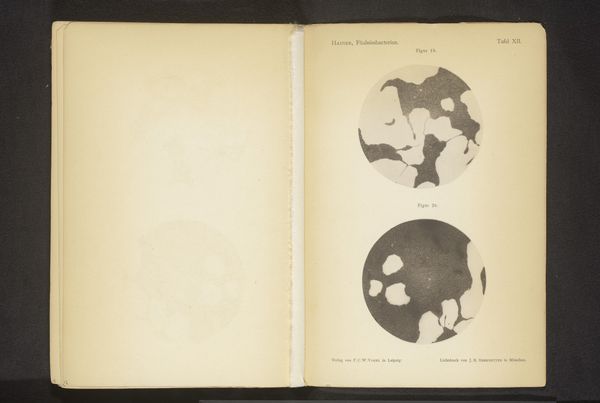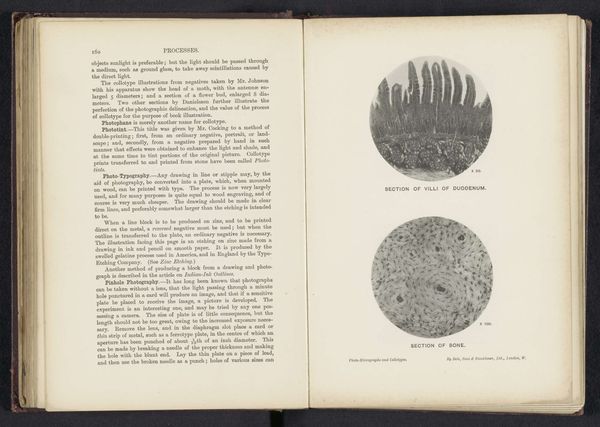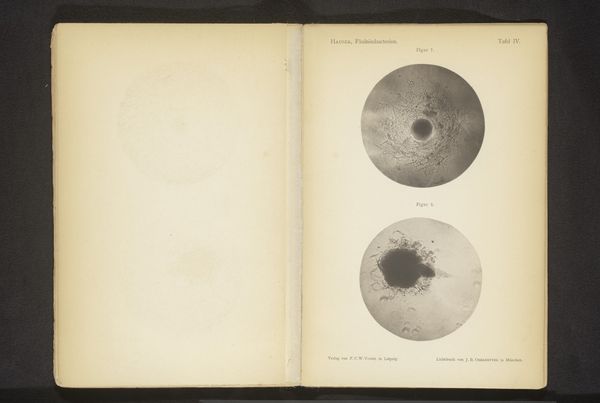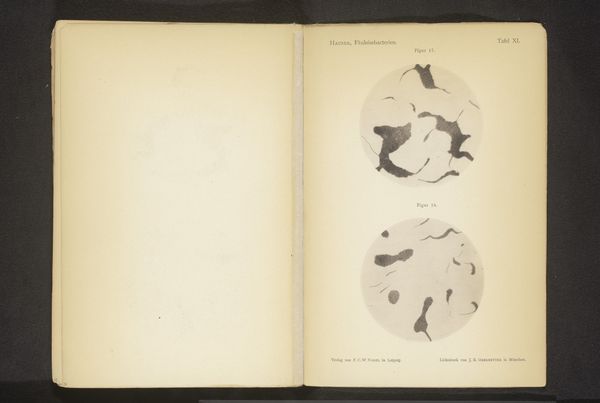
print, paper, photography
#
aged paper
#
paperlike
# print
#
book design
#
personal journal design
#
paper
#
photography
#
folded paper
#
thick font
#
publication mockup
#
letter paper
#
paper medium
#
publication design
#
monochrome
Dimensions: height 258 mm, width 170 mm
Copyright: Rijks Museum: Open Domain
Editor: This is “Twee microscoopopnamen van bederfbacteriën,” or "Two Microscopic Images of Spoilage Bacteria," made before 1885, by Gustav Hauser. It seems to be a print in a publication, a book of some sort. It's quite striking to see scientific imagery presented like this; it almost feels like a coded language. What do you make of this piece, especially given its age? Curator: That’s a keen observation! The "coded language" feel you pick up on is actually quite powerful. Remember, visual representations of the unseen—whether demons, gods, or microbes—have always carried immense cultural weight. These images, while seemingly objective scientific documentation, tap into that ancient tradition of visualizing the invisible forces that affect our lives. Consider the historical context; the late 19th century was a time of great anxiety around disease and hygiene. How do you think these images might have been received by the public? Editor: Maybe with a mix of fear and fascination? It's like seeing a monster under the bed, except this one is real and potentially everywhere. Curator: Exactly. And the circular framing – these lens-shaped vignettes – is also symbolic. It evokes a sense of focused attention, a scientific "seeing," but also hints at containment. What are they containing, I wonder? Editor: Disease, maybe? Or perhaps it's about humanity’s attempt to understand and control nature, even at the microscopic level. It seems that bacteria can indeed be something sublime to witness, under the right lens. Curator: Precisely. Think about the emotional impact these images had; how did they alter humanity’s collective psychological relationship with nature, disease, and death? This simple, aged paper holds a potent message about control, knowledge, and the invisible world that shapes our own. What’s old becomes, once again, new. Editor: That’s definitely given me a fresh perspective. Thanks!
Comments
No comments
Be the first to comment and join the conversation on the ultimate creative platform.
